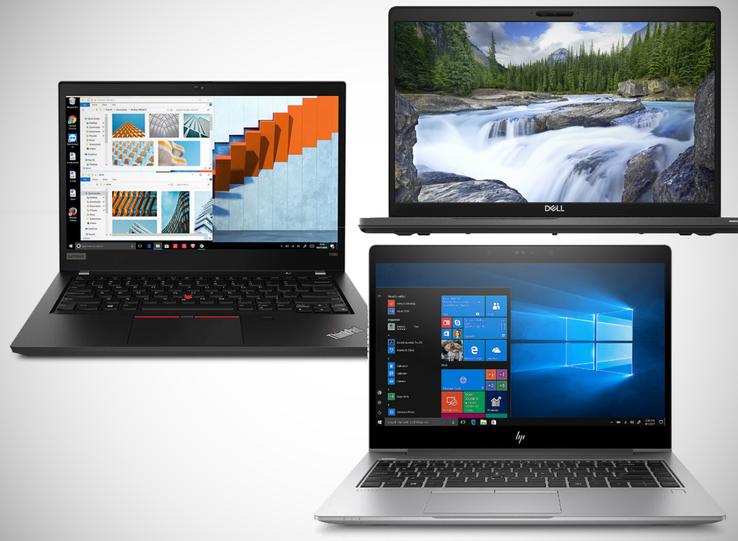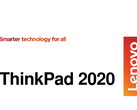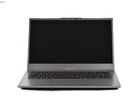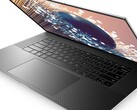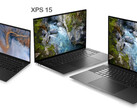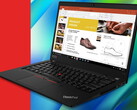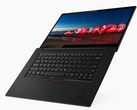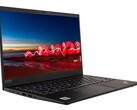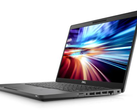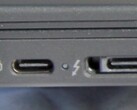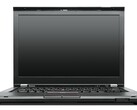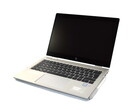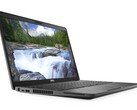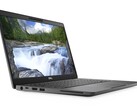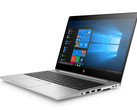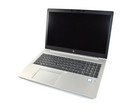Are T series ThinkPads still king? The Dell vs Lenovo vs HP business-laptop showdown
Update 05.05.2020: This article is a commentary contribution. It only reflects the individual opinion of the author(s) cited, but not that of the entire editorial team. The original article was revised accordingly.
Before we dive into things, this article includes a lot of my own opinions on various topics. While the intention of this article is to share information you might not otherwise know about these three business laptop lines, I will be expressing my opinion throughout the article when making comparisons between them. The point of this is to spark some discussion about this topic first and foremost, not to present my own conclusions as absolute, objective fact. If you disagree or think I’m not considering something important, I’d love to have that discussion in the comments.
To make this article as concise as possible, we’ll only be taking a look at the standard T series ThinkPads, as well as their rough equivalents from Dell (the 5000 series Latitudes) and HP (the EliteBook 800s) to make things fair. Performance, battery, and overall test comparisons will be done with the latest available models from these companies in our database whenever possible. If there are any "high performance" models available, I'll be referencing those as well, but they will not be the main point of comparison.
We won’t be looking at any “slim” variants of these laptops (such as the ThinkPad T490s) or any of the 2-in-1 options in this article. I may take a closer look at the higher and lower ends of these companies' business laptops (as well as the 2-in-1 options) in the future, but not now.
Finish, Durability, and Build Quality
Update 05.07.2020: T590 also has soft-touch palmrest. ThinkPads still have a magnesium subframe, it's just not noted in PSREF.
There are a few obvious distinctions between these three lines. HP has fitted the EliteBook 830 and 840 with an aluminum chassis, whereas the aforementioned Latitudes and ThinkPads use some form of plastic for the shell. While I prefer the feel of aluminum on laptops, aluminum laptops can dent and warp, potentially sacrificing components in the event of a drop.
Plastic shells, like on the ThinkPads and Latitudes, can sacrifice themselves over the internals with cracking or snapping of the plastic. All three of these companies tested these laptops to the MIL-STD-810G standard, so they should be fairly durable.
Lenovo uses a grippy, rubberized coating on the palmrest of the T490, as well as the T590. The Dells have a smooth finish to their palmrests in contrast. And, of course, the HP’s aluminum build has a nice matte finish.
Personally, I cannot stand rubberized palmrests, and that’s largely due to how I type. If you're not like me and learned how to type correctly (using most/all of your fingers), this might not bug you as much, but my wrists end up moving enough where how grippy the plastic is gets frustrating. Plus, during the hotter times of the year, I’ve found that these sticky, rubbery coatings just promote sweaty wrists. I can't say I enjoy having sweaty wrists. Plus, the coating just feels cheap to me. That's coming from someone who daily drives a ThinkPad T480 with a rough plastic finish, by the way.
Something worth note regarding the plastics used in these machines is that they aren't just your typical plastics. Both Lenovo and Dell use reinforced plastics to improve the durability of their machines. ThinkPads utilize fiberglass ("50% GF" refers to the fiberglass used) to improve the durability of the plastic while recycled carbon fiber is used in the Latitudes. Dell notes the inclusion of carbon fiber in these Latitudes under the features section, such as here on the Latitude 5400's product page. Trying to figure out which of these is better is completely outside of the scope of the article, as well as my realm of expertise. Until there's information suggesting otherwise, I'd consider these solutions equivalent.
Build quality across the board looks pretty good based on both my personal experiences and our published reviews of these machines. These laptop cases are all pretty sturdy overall, so concerns about deck flex, chassis flex, and overall wobbliness are non-existent here.
Overall, when it comes to business machines, the EliteBooks have the best finish of all three in my opinion. It's hard to beat aluminum. Between the Latitudes and the ThinkPads, which are both a plastic chassis, I'm going to have to pick the Latitude purely because of the soft-touch, rubbery plastic.
However, when it comes to overall build quality and durability, Lenovo takes the win here purely due to the magnesium subframe featured in ThinkPad palmrests. This subframe helps prevent components inside the device from twisting and breaking in the even of a hard fall, which I'm a big fan of. I'm glad Lenovo has kept this around.
Size Options
While Dell offers 13”, 14”, and 15” variants of its 5000-series Latitudes, HP and Lenovo only offer two of the three. HP opts for the 13” EliteBook 830 and the 14” EliteBook 840, whereas Lenovo opted for the 14” T490 and the 15” T590. Depending on what size machine you want and/or need, this could be incredibly important.
While I personally prefer to hold all laptops to an objective, power vs temperature based comparison when it comes to performance, it's not easy to do that fairly across multiple devices with vastly different footprints. For the sake of simplicity, and in part from a lack of accurate, consistent, and/or reliable data, I'll be comparing the 14" versions of these machines only.
Regarding size options in general, Dell takes the win here for the most options.
Performance
Performance is going to be a bit tricky for this situation. While we do have a lot of data available in our reviews on the ThinkPad T490 and the last generation (but very similar to the G6) EliteBook 840 G5, we unfortunately don’t have the latest Latitude 5400 or 5401 reviewed at this time. Data when it comes to business machines can be fairly sparse, so I'll be doing my best based on what I have available. Tests like Cinebench R15 can poorly indicate actual laptop performance due to how short they run for, so tests like Cinebench R20 are more indicative of the actual performance you can expect.
Here, you can see our Cinebench R20 runs for various models of the ThinkPad T490. You can see the T490 is leading the pack here by anywhere from 4% to 13% depending on where you look. These scores are pretty impressive for a slim 14" business notebook, as shown by it beating a number of its competitors.
Finding Cinebench R20 data for the Latitude 5400 has proven to be quite a challenge, unfortunately. Not a lot of public test results are available for these machines that show anything too clear or conclusive, nor is there really any stress test results that show the wattage the machine can sustain over time. Until this data exists, it's going to be pretty difficult to recommend the Latitude 5400 or 5401 for any performance-oriented tasks. However, LaptopMedia has a review of the Latitude 5400 which includes stress test data. The tested Latitude 5400 seems to be slightly behind the performance of the ThinkPad T490s they also tested. Taking a look at where our T490s test results place within our T490 results above shows that the Latitude is likely performing at or around the levels of the ThinkPads, but it's difficult to say for certain.
Regarding the EliteBook 840, we don't have Cinebench R20 data on that. However, we do have R15 data, so we'll use that to compare.
As you can see above, the EliteBooks are pretty much smoked by the T490 scores. It's worth noting that during a full CPU stress test, the CPU in the EliteBook tested is only at roughly a "frigid" 60 °C. Some adjustment with a tool such as Throttlestop could bring this device up to competitive levels, assuming HP hasn't patched out Throttlestop's functionality while fixing Plundervolt exploits. While this isn't ideal (I realize not everyone wants to have a third party tool running just to get good performance), it's still a possibility.
Regardless, Lenovo and Dell seem to be the front runners here. While this isn't exactly a "fair" win for Dell and Lenovo (I don't have equivalent sets of data, plus the thermal solutions aren't being pushed as hard in the EliteBook), the EliteBook's shortcomings are HP's fault alone here. If you need guaranteed performance here, Lenovo might (still) be the best choice until we have more data to work with.
Connectivity / Port Selection
There's not much to say here, to be honest. The port selection is fairly similar between these devices, at least when considering similar form factors. One notable thing about Lenovo is the lack of straight DC-in on the device, something both HP and Dell have opted to include. Some would argue that including a barrel connector over just another USB-C port that you can charge with is pointless, but hear me out. On the Latitude side of things, you have the option to replace the barrel connector if it starts to get too loose for your liking, breaks, or just needs a replacement for whatever reason. HP doesn't give you this option for its barrel, but both offer one thing: a redundant, separate charging circuit. In an unfortunate event of an internal failure with the USB power delivery circuitry, you'd still be able to keep the device charged with a barrel connector.
However, you can still charge your machine with a USB-C charger, even with these barrel connectors. They're not really getting in the way, with the notable exception of Latitudes configured without Thunderbolt 3. However, that's a bit of a self-inflicted wound and not really relevant here. If you're docked over Thunderbolt 3, or just using some sort of USB-C charger, there's plenty of ways to both use USB-C accessories with that port as well as charge. That's one of the benefits of Thunderbolt 3 after all. I personally think that any machine with both connector types should at the very least ship with both tips for the charger, but that doesn't happen.
If you're looking at EliteBooks, you'll probably notice a long bar along the bottom shaped slightly like an SD card slot. That's the docking connector. It takes up an absurd amount of space on the right side for reasons that aren't quite clear. This is especially bad considering that other business machines have put these connectors on the bottoms of their machines in the past, or at the very least used a smaller connector. It's even more confusing when considering it's right next to a Thunderbolt 3 port, which is often used with docks. Something like a microSD card slot likely could've been added just above it, but that's not present on the EliteBooks at all. I'm not complaining about the dock connector existing, it just needs to be adapted into something that isn't resulting in weird sacrifices.
Dell's Latitude 5000s win the port selection battle in my eyes due to the variety of connectors available, among other previously mentioned things.
Screen Quality, Battery Life
Unfortunately, due to the lack of data available across all applicable models, I can't provide sufficient information here on these topics. If more review data is available in the future on these things, this article may be updated to reflect this. As a result, this section will remain rather empty until that happens. As a brief note, the Latitude 5500 beats out the ThinkPad T590 in our WiFi battery test by roughly 17%. It's worth noting that both tested T590 units had dedicated graphics, which likely significantly impacted battery life test results negatively. The Latitude's 1080p screen wasn't quite as good overall as the one in the T590, but it did have better DeltaE2000 results both before and after.
I've also added the Schenker VIA 14 to the battery life test since the results it gets are rather impressive considering the overall size difference, plus we mentioned it in a recent article about business machines and battery life.
| Battery Runtime - WiFi Websurfing | |
| Schenker VIA 14 | |
| Dell Latitude 5500 | |
| Lenovo ThinkPad T590-20N4002VGE | |
| Lenovo ThinkPad T590-20N40009GE | |
Input Devices
All three companies offer at least an option for a keyboard with a pointing stick in the middle. While I can't personally vouch for how good any of these pointing sticks work, nor am I a real connoisseur of keyboards, I have had a good experience with the ThinkPad keyboard and TrackPoint. However, due to how Lenovo's keyboards have rather odd behavior at times, I can't confidently say that you're getting the best keyboard experience from ThinkPads, especially if you type fast. But, to be fair, the experience is altogether better than the Latitudes I have used (most recently a Latitude 7490), so I'll have to tie Lenovo and Dell since I can't say for certain.
It's notable that HP neglects to include a middle button for its pointing stick, making it rather difficult to scroll through web pages and documents using it. That's a pretty big shortcoming in my eyes, and I'm sure anyone who might want to use the pointing stick would notice.
Otherwise, all three are fairly similar in their input devices. There's no real clear winner here, but Lenovo edges out just ahead for me due to the quality of its keyboard switches more than anything else. This is almost exclusively preference-based, so keep that in mind.
Upgradability and Repair Options
Lenovo is behind in this regard. The T490 only features a WWAN card slot, socketed M.2 NVMe storage, as well as only one stick of memory in a socket (the other is soldered). The T590 uses the same mainboard and, as a result, has the same shortcomings. However, not only do Dell and HP provide the same upgrade options, they provide more. The two companies opt to allow users to replace both sticks of memory, the WiFi card, WWAN card, and storage.
Dell accomplishes this while being only just 1.7mm thicker (just under three-quarters of the thickness of Samsung's 970 PRO NVMe SSD for reference), while HP's EliteBook 840 G6 is only 0.1mm thicker with the same options. It's also worth noting that, again, the T490 features an M.2 slot and WWAN card slot on the board. All of the devices are within 0.04lb of each other, so it's not a weight issue either. There's little to no valid reason why these would need to be soldered outside of cost savings, or potentially locking customers into first-party memory upgrades.
It's also worth noting that Dell and HP offer these upgrade options in their 13" machines as well, which has me questioning if Lenovo soldering everything to the mainboard has anything to do with the pursuit of slimness.
Overall
If I had to pick one of these lineups, I'm fairly certain I'd pick the Latitude line. Dell's offerings here are really solid from what I've seen, so it's fairly likely I'll keep looking into these machines. I have tried out a number of Latitude machines in the past with mixed results, but no manufacturer is free from missteps and poor design choices year-to-year. While Lenovo is still putting out some solid contenders, there's just so many sacrifices being made in areas I care about where I can't justify a purchase like that. HP's shortcomings are rather glaring after a second, less fanciful look at them. I'm more than willing to change my mind the moment any company starts putting out better products though, so we'll see.
Disagree, find a factual error, or just think I missed something? Let me know in the comments.
Source(s)
HP EliteBook 840 G5 Mainboard Replacement Video
LaptopMedia: Latitude 5400 review
Notebookcheck Reviews




